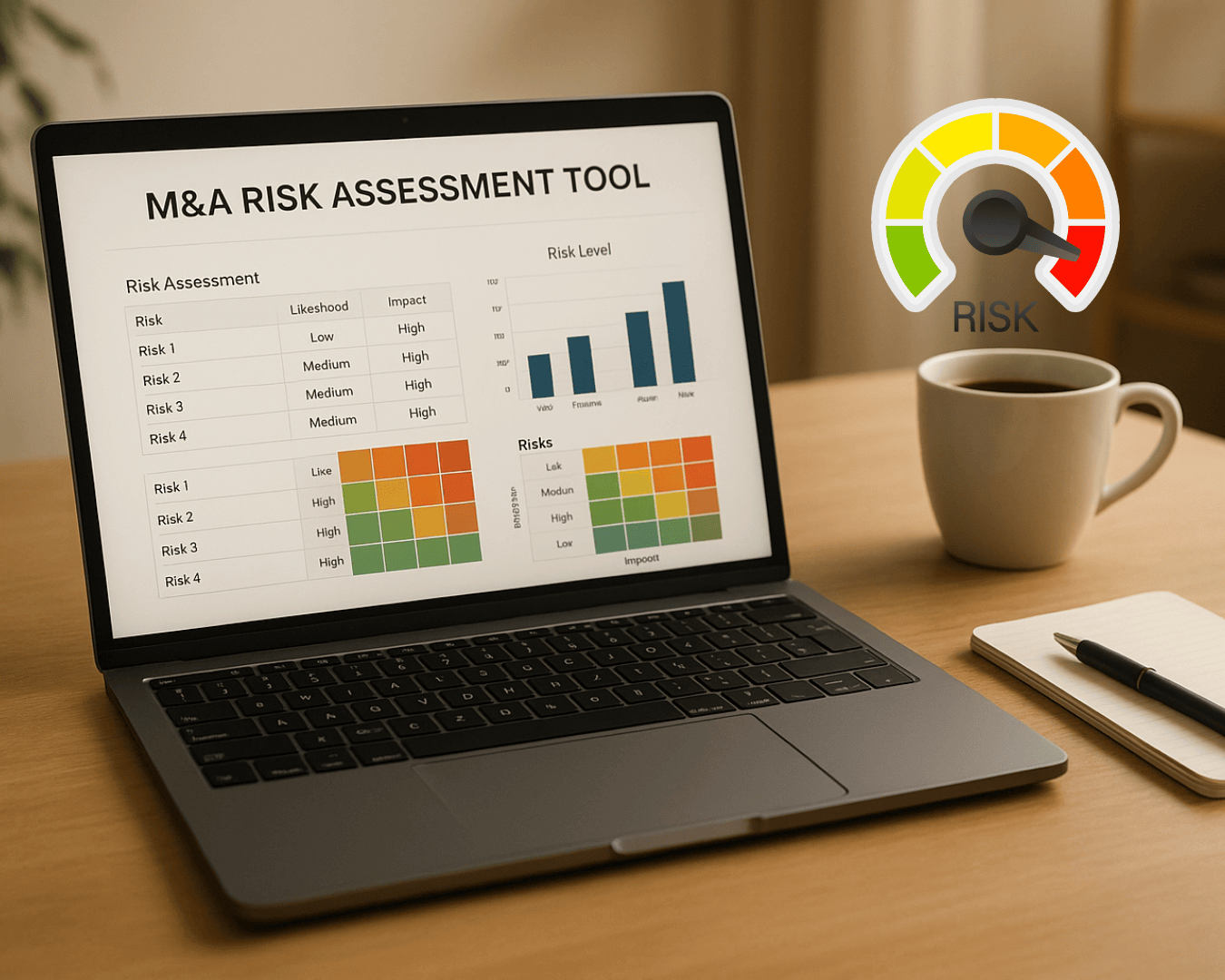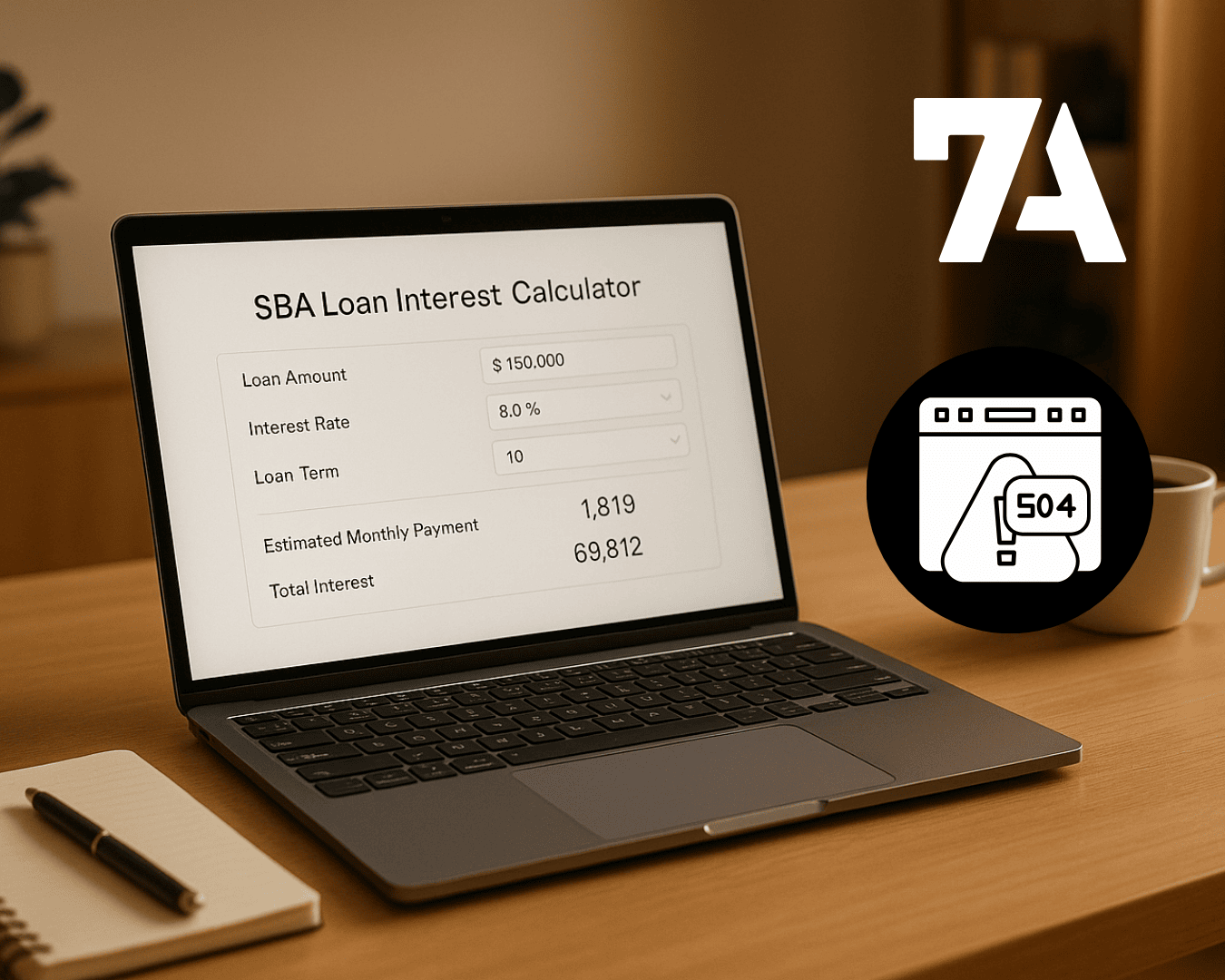Equity rollovers can defer taxes, but hidden tax traps can lead to costly surprises. Here's what you need to know:
- What is an equity rollover? Sellers reinvest part of their sale proceeds into the buyer's entity, retaining ownership and deferring taxes until a future liquidity event.
- Key tax risks: Misclassifying rollover equity as compensation, receiving taxable "boot" (cash or non-qualifying property), and poorly structured earnouts.
- Who is affected? Sellers risk immediate tax liabilities, buyers may lose tax benefits, and investors could face unfavorable profit allocations.
- Avoiding pitfalls: Use proper IRS structures (e.g., IRC §351, §721), file elections on time, and ensure clear legal documentation to secure tax deferral.
Bottom line: Work with experienced advisors to structure deals correctly and avoid unexpected tax bills.
What is an F-Reorganization, 338 (h)(10), and how are they used in an equity rollover.
Common Tax Traps in Equity Rollovers
Even well-structured equity rollovers can lead to unexpected tax surprises for both buyers and sellers. Recognizing these potential pitfalls early on allows for smarter transaction planning. Below, we break down three major tax traps - mischaracterization, cash boot issues, and earnout complications - that can disrupt the intended tax deferral.
Mischaracterization of Compensation vs. Purchase Price
One of the costliest mistakes occurs when the IRS reclassifies rollover equity as compensation rather than part of the purchase price. This often happens when vesting is tied to continued employment, turning what should be capital gains into ordinary income subject to payroll taxes. To avoid this, it's crucial to ensure that documentation clearly ties vesting to time-based or performance milestones, rather than employment. Without this clarity, the tax deferral benefit could be lost.
Cash "Boot" in Reorganization Transactions
"Boot" refers to any cash or non-qualifying property received alongside equity in a transaction meant to be tax-deferred. Even if the transaction qualifies for tax deferral under IRC §351 or §368, receiving boot triggers immediate taxable income. This can catch sellers off guard, as they might assume their entire rollover is tax-deferred.
For instance, in a type A reorganization, if more than 50% of the merger consideration consists of boot, the transaction loses its tax-deferred status. Additionally, when participants hold at least 50% of the post-transaction stock, IRC §304 may apply ordinary dividend tax rates to the boot. Even small amounts of boot can reduce the tax deferral benefit, potentially creating unexpected financial burdens or cash flow issues.
Earnouts and Deferred Payments
Earnouts and contingent payments add a layer of complexity to equity rollovers. The primary risk is recharacterization - if an earnout is tied to ongoing employment or performance metrics resembling compensation, the IRS may classify it as ordinary income rather than part of the purchase price.
Timing also presents challenges. Depending on how the earnout is structured, you might have to report income before actually receiving the payment, as dictated by installment sale rules or the open transaction doctrine. To avoid these issues, documentation must clearly establish that the earnouts or deferred payments are tied to the purchase price based on future performance, not compensation. Any ambiguity could lead to premature income recognition or unfavorable tax treatment.
Summary of Tax Traps
The table below provides a quick overview of these common traps, how they arise, and their consequences:
| Tax Trap | How It Arises | Consequence |
|---|---|---|
| Mischaracterization of Compensation | Vesting tied to employment rather than milestones | Ordinary income tax under IRC §83 |
| Cash "Boot" in Reorganization | Receiving cash or non-qualifying property with equity | Immediate taxable income on the boot portion |
| Earnouts and Deferred Payments | Poorly structured contingent payments or earnouts | Higher taxes or reclassification as compensation |
How to Avoid Tax Pitfalls
Navigating tax complexities during transactions requires careful planning, clear documentation, and strict adherence to IRS deadlines. By addressing potential pitfalls early, you can secure tax deferral and remain compliant.
Structuring Rollovers for Tax Deferral
The IRS offers provisions like IRC §351 for corporations and IRC §721 for partnerships or LLCs to enable tax deferral. Under IRC §351, you can exchange equity for stock in the acquiring corporation without triggering immediate taxes - provided contributors collectively control at least 80% of the corporation after the exchange. Falling short of this threshold can result in immediate taxation. On the other hand, IRC §721 is often more flexible for partnerships, as property contributed in exchange for a partnership interest generally qualifies for tax deferral without needing a strict control percentage. This is why many buyers structure deals as LLCs, making it easier for sellers to defer taxes.
However, be cautious about receiving "boot" - cash or non-qualifying property - as it triggers taxable income. In reorganizations, the boot must remain below 50% of the total consideration to maintain favorable tax treatment. In most middle-market M&A deals, sellers typically roll over 10% to 40% of their equity into the new entity. This amount may occasionally fall short of the continuity of interest requirements for certain tax-free reorganizations, so careful planning is necessary.
Once the structure is determined, ensure your strategy is backed by strong legal documentation.
Proper Documentation and Legal Support
Thorough documentation is your best defense against IRS scrutiny. Key agreements - such as purchase agreements, operating agreements, and legal opinions - should clearly outline the transaction's intent and structure. For example, when vesting schedules are involved, linking them to performance milestones or time-based conditions (rather than continued employment) can help avoid the IRS reclassifying your rollover equity as ordinary income subject to payroll taxes.
Operating agreements should also address profit allocation, distribution policies, and exit rights. This ensures you don't face tax liabilities on profits you never actually receive. A detailed legal review can uncover potential issues, such as the implications of IRC §304 on boot payments, which could disrupt your expected tax treatment. Additionally, conducting due diligence on the buyer's financial health is crucial - your rollover equity's value hinges on the ongoing performance of the acquiring entity.
Timely Elections and Compliance
Filing the right tax elections on time is critical to preserving your tax strategy. For example, file a §83(b) election within 30 days if you have vesting rollover equity. This election allows you to pay tax on the equity's current value rather than on a potentially higher value when it vests. Without it, you may end up recognizing ordinary income as the equity vests, which is often taxed at a higher rate than capital gains.
Depending on the transaction structure, additional filings may also be required. Work closely with tax advisors to ensure all necessary elections are submitted promptly. Maintaining detailed records of your basis in the rollover equity and periodically reviewing your transaction structure are also essential for staying compliant, especially as IRS rules and guidance evolve.
Given the complexity of these processes, involving skilled tax and legal advisors early in the transaction is essential. Their expertise can help you design an effective rollover strategy, avoid costly errors, and address any IRS challenges that may arise.
sbb-itb-a3ef7c1
Key Tax Codes and Regulatory Requirements
Navigating the Internal Revenue Code (IRC) is crucial for structuring equity rollovers without running into costly tax issues. These rules determine if a transaction qualifies for tax deferral, making it essential to understand the key provisions.
Important IRS Code Sections
Here’s a breakdown of key IRC sections that come into play when dealing with equity rollovers:
IRC § 83
This section governs the tax treatment of property received in exchange for services, particularly when rollover equity is tied to vesting or employment restrictions. If the equity vests through continued employment, the IRS treats it as compensation, meaning it’s taxed at ordinary income rates (and subject to payroll taxes) rather than capital gains rates. To navigate this, a §83(b) election must be filed within 30 days of receiving the restricted equity.
IRC § 351
This section allows for tax deferral in corporate exchanges, provided strict control thresholds are met. Specifically, at least 80% control must be maintained post-exchange. Falling below this threshold can result in taxable income. Additionally, if liabilities are assumed by the corporation during the exchange, IRC § 357 may trigger unexpected taxable income.
IRC § 368
This section outlines tax-free reorganizations, including mergers, stock-for-stock exchanges, and asset-for-stock exchanges. Each type of reorganization has specific requirements, such as maintaining a continuity of interest and limiting the amount of cash ("boot") received tax-free. For instance, in a Type A reorganization, cash consideration typically cannot exceed 50% of the total transaction value to preserve tax-free treatment.
IRC § 338(h)(10)
This section gives buyers the option to treat certain stock purchases as asset acquisitions for tax purposes, allowing for a step-up in the asset basis of the target company. However, this election is generally unavailable if a nontaxable rollover involves more than 20% of the target’s stock.
| IRC Section | Primary Use | Key Requirement | Major Limitation |
|---|---|---|---|
| § 83 | Restricted equity | 30-day election window | Vesting tied to employment triggers ordinary income |
| § 351 | Corporate exchanges | 80% control threshold | Liability assumptions may result in taxable income |
| § 368 | Tax-free reorganizations | Continuity of interest | Cash boot limitations |
| § 338(h)(10) | Asset step-up elections | Qualified stock purchase | Unavailable if >20% of stock is rolled over |
Each of these sections comes with its own set of rules and limitations, which can significantly impact the tax treatment of a transaction.
Entity-Specific Considerations
The type of business entity involved in the transaction plays a big role in how these IRC provisions apply and can influence the overall tax outcome.
C Corporations
Rollover participants in C corporations may face double taxation - first at the corporate level and then again when distributions are made to shareholders. However, C corporations often meet the requirements for IRC § 351 exchanges and certain § 368 reorganizations more easily.
S Corporations
S corporations come with unique challenges for equity rollovers. They are bound by a single class of stock rule, requiring all shareholders to have equal rights to distributions and liquidation proceeds. Additionally, S corporations have restrictions on the number and type of shareholders (e.g., no more than 100 shareholders and limitations on certain entities), which can complicate structuring rollover arrangements.
LLCs Taxed as Partnerships
LLCs offer more flexibility for rollovers, particularly under IRC § 721, which allows for tax-deferred contributions of property in exchange for partnership interests. Unlike IRC § 351, § 721 doesn’t impose strict ownership thresholds. However, careful attention must be paid to profit and loss allocations. Disproportionate allocations relative to rollover percentages can result in phantom income - taxable income without corresponding cash distributions.
The choice of entity also affects ongoing tax obligations. Pass-through entities like S corporations and LLCs allocate taxable income directly to owners, even if no cash distributions are made. This makes it essential to review distribution policies to ensure owners have enough liquidity to cover their tax liabilities. On the other hand, C corporations provide more control over the timing of taxable distributions but come with the downside of potential double taxation.
To avoid pitfalls and maximize tax efficiency, it’s critical to involve tax advisors early in the planning process. The interplay between these IRC sections and entity structures offers opportunities for tax planning but also requires careful management to prevent unintended consequences.
Tax-Deferred vs. Taxable Rollovers: A Comparison
When it comes to rollovers, the main difference between tax-deferred and taxable structures boils down to when taxes are paid. Tax-deferred rollovers let sellers delay paying taxes on equity exchanged for buyer equity, as long as the deal meets specific IRS rules under sections like IRC § 351 or § 368. On the other hand, taxable rollovers require sellers to pay taxes immediately on the value of the equity involved.
Each structure has its pros and cons. Tax-deferred rollovers help sellers keep more after-tax money and maintain cash flow, but they come with risks like illiquidity, phantom income, and dependence on the buyer’s performance. Taxable rollovers, while simpler and offering immediate liquidity, mean sellers face immediate tax bills and might miss out on potential future gains.
Here’s a quick side-by-side comparison of the two structures:
Comparison Table
| Criteria | Tax-Deferred Rollover | Taxable Rollover |
|---|---|---|
| Tax Timing | Taxes deferred until a future exit event | Taxes due immediately at closing |
| Key Benefits | Higher after-tax proceeds; cash flow preserved; future growth potential | Immediate liquidity; simpler structure; buyer gets asset basis step-up |
| Primary Risks | Illiquidity until next exit; phantom income; buyer performance risk | Immediate tax burden; reinvestment with after-tax dollars; loss of future appreciation |
| Common Pitfalls | Failing IRS requirements; poor documentation; excessive cash "boot" | Underestimating tax impact; bad reinvestment terms; missing future gains |
| IRS Code Sections | IRC § 351, § 368, § 721 | IRC § 1001, § 338(h)(10), § 336(e) |
| Documentation Complexity | Extensive legal structuring required to meet IRS rules | Standard sale documentation |
| Liquidity | Low until future exit | High (immediate cash available) |
| Typical Use Cases | Seller-friendly deals; private equity rollovers; ownership continuity | Buyer-driven deals; asset step-up needed; immediate liquidity required |
This comparison highlights how the choice of structure affects both liquidity and tax outcomes after the deal closes. If maximizing after-tax proceeds is your goal and you’re okay with some illiquidity, a tax-deferred rollover may be the better fit - assuming the deal meets the strict IRS requirements discussed earlier.
Taxable rollovers, on the other hand, are more common when buyers want immediate liquidity or the transaction involves substantial cash or other non-qualifying property. In these scenarios, working with advisors to model your after-tax results and negotiate additional compensation can help offset the immediate tax hit.
One thing to keep in mind: equity in both types of rollovers generally remains illiquid until a future exit event, which could take years. With tax-deferred rollovers, you may feel more motivated to hold onto your equity longer to maximize the tax benefits. However, this can become tricky if personal financial needs arise before the next liquidity event.
In the U.S. middle market, most equity rollover deals favor tax deferral, especially in seller-friendly situations. This trend shows that sellers often prioritize maximizing after-tax proceeds, while buyers are increasingly open to accommodating these structures in competitive transactions. That said, sellers will still face taxes when the rollover equity is eventually sold in a future deal.
Best Practices for Tax-Efficient Rollovers
Key Takeaways
To avoid the tax pitfalls discussed earlier, following a set of best practices can help you steer clear of unexpected liabilities. Start by consulting experienced tax and legal advisors early in the process. This ensures you can take full advantage of tax deferral benefits and comply with critical IRS requirements under sections like IRC §§ 351, 368, and 721. Maintaining clear and well-organized records that align with IRS standards is essential. Proper documentation acts as your safeguard against audits and potential missteps.
It's also important to assess the financial stability of the buyer and secure protective rights like put options or tag-along provisions. These measures help manage the risks associated with rollover equity, which typically remains illiquid until a future exit event occurs. Limiting the use of cash "boot" in the transaction is another key strategy. Even small amounts of non-qualifying property can result in immediate taxation, turning a tax-deferred rollover into a taxable event. Running scenario models can further enhance your decision-making by projecting future tax obligations and liquidity needs. This helps balance the trade-offs between immediate liquidity, potential tax savings, and long-term growth opportunities. By taking a structured approach, you can simplify these complex processes and make more informed decisions.
Role of Clearly Acquired in Streamlining Transactions

Navigating the intricacies of tax-efficient rollovers can be daunting, but Clearly Acquired offers tools and expertise to simplify the process. Their AI-powered platform, combined with personalized advisory services, helps clients avoid costly mistakes. Their team of professionals provides tailored guidance for tax planning, ensuring that your rollover transactions are set up for success. Additionally, their AI-driven data rooms help maintain accurate documentation and records to support the intended tax treatment.
Clearly Acquired also offers educational resources on topics like earnouts and acquisition strategies. This guidance equips users to handle complex transaction elements before they become problematic. Since earnouts often represent a tax trap in rollover deals, the platform's expert insights can help structure these arrangements to avoid unnecessary tax burdens.
FAQs
How can I prevent my equity rollover from being taxed as compensation by the IRS?
To make sure your equity rollover doesn't get mistakenly treated as taxable income, it's important to structure the deal the right way. Collaborate with seasoned tax advisors and legal experts to align the transaction with IRS rules. A few key steps include accurately documenting the process and ensuring the equity is swapped for ownership interest, rather than being classified as payment for services.
Missteps in handling an equity rollover can result in surprise tax bills, so careful planning is key. By leaning on professional advice and staying informed about tax regulations, you can reduce risks and keep the process smooth and compliant.
How can I avoid unexpected taxes, like 'boot,' during an equity rollover?
When dealing with equity rollovers, careful planning is crucial to sidestep unexpected taxes, like "boot". The structure of the transaction plays a significant role, so ensure the deal aligns with tax regulations and minimizes taxable elements.
Collaborating with seasoned advisors or using specialized M&A tools can make navigating these details much easier. Taking the time for thorough planning and due diligence can save you from expensive tax surprises down the line.
How can I structure earnouts in equity rollovers to minimize unexpected tax liabilities?
When structuring earnouts in equity rollovers, careful planning is crucial to avoid unexpected tax surprises. A few important factors to keep in mind are: clearly defining the earnout terms, understanding whether the earnout will be taxed as ordinary income or capital gains, and consulting a tax advisor to correctly allocate the purchase price components.
Ensuring proper documentation and adhering to IRS guidelines can prevent costly errors. Partnering with experienced professionals, like those at Clearly Acquired, can provide the expertise and resources needed to navigate complex M&A transactions while fine-tuning your tax strategy.




.png)







































.png)








































%20Loan%20Application%20Checklist.png)
























